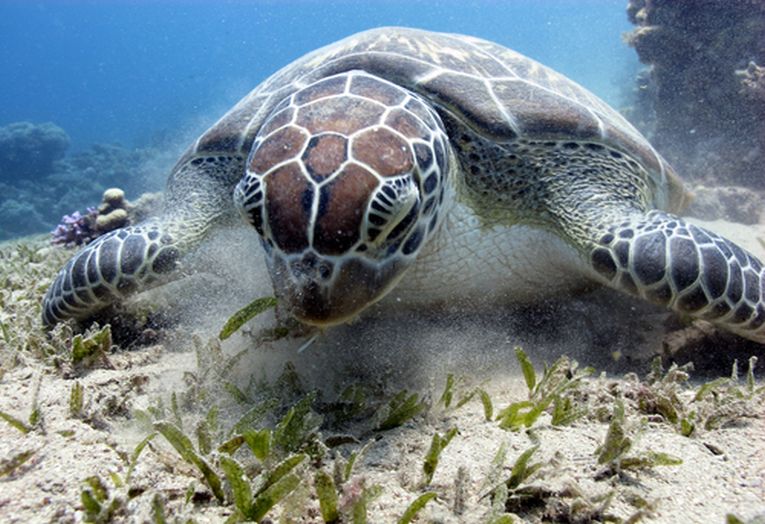Over 20 years, a study of the permitted green turtle trade next to Nicaragua's extensive sea-grass beds has provided a lot of bad news. The sea grass seems fine and a rearing programme to provide recruits to the population to replace those killed is so far successful. The problem is that the large number of turtles killed seems to be decimating the population in a large area.
Far be it for anybody to prescribe what people should eat. When it comes to changing diet, though, it must be permissible to persuade local people to adopt better habits. The steep decline in populations since 2008 is traceable to over-fishing. As there is no limit on this take,
obviously there will have to be a severe restriction. Self regulation is impossible when there is insufficient contact between turtle eaters, turtle catchers and government.
The problem is highlighted by Wildlife Conservation Society and University of Florida researchers, Cynthia J. Lagueax, Samantha Strindberg and Cathi L. Campbell in PloS One's paper:- Artisanal Green Turtle, Chelonia mydas, Fishery of Caribbean Nicaragua: I. Catch Rates and Trends, 1991-2011.
Indigenous Miskitu Indian people and others eat the meat from, over the two decades, 171, 556 animals. Each boat trip brings back between 2.8 turtles, a big decline from 6.5, twenty years ago. Some communities from the 14 sites sampled are complaining that this 56% decrease is worse in some areas, with a desperate 90% decline. The green turtle is the second biggest of the turtles (400lb or 181kg) and is therefore very attractive as a meat source. However, this is a listed species with the IUCN and you and I should not imagine we could possibly kill one, even if we wanted to. The point is that traditional fisheries the world over are being faced with the same challenge: they change or they die. No other turtle is available, but at the moment, there are still edible fish in many of the local waters.
The problem with all turtle catch of course is that we have to adapt fishing tackle, nesting beaches and tourist demands to save turtles and eggs alike. Apart from the sea grass community, habitat deterioration is rife, while many kinds of pollution in the Gulf have been building rapidly. Green turtles bred at Tortuguero in Costa Rica are having an impact on the population and they also have more females nesting there, but it is possible that the nestlings are not yet big enough to influence catches further north in Nicaragua. There was a peak in catches from the Caribbean in 1997 and 2002, but after 2008, the decline everywhere has been rapid.
A new perspective is needed, as we try to ensure sustainability and persuade people that this resource is for the future, not a poor man's solution to his food needs.










